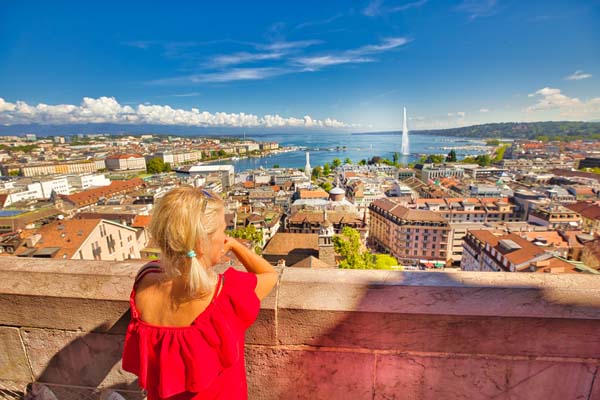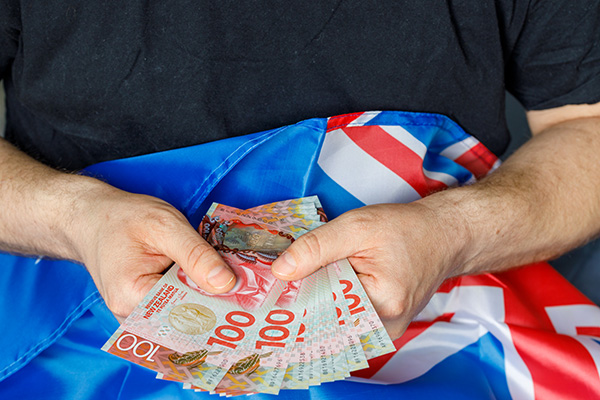
The Cheapest & Safest Countries to Live in the World
Living overseas comes with a lot of benefits. But if you worry about the cost of living eating away at your bank account, why pick the most expensive and safest countries to live in the world? Fortunately, you can live somewhere a lot cheaper without having to sacrifice your well-being. In many affordable countries, a lower US salary could allow you to live quite comfortably. If you only make $1,000 USD a month, that would maybe cover a fraction of your rent in a big American or European city. However, that same amount of money could cover rent, food and other expenses in a more affordable country, even in bustling metros.

If you’re a digital nomad, teaching abroad or retiree preparing to move abroad, these countries can give you the best of both worlds in terms of safety and affordability:
Cheapest Countries to Live in Asia
Asia’s economic, environmental and cultural diversity makes it easy to find both affordable and safe countries to live in. And since they’re spread out across the continent, there are plenty of regions to choose from!
India
India is known for its waterfalls and green mountainsides that house its famous teas, spices, and cash crops.
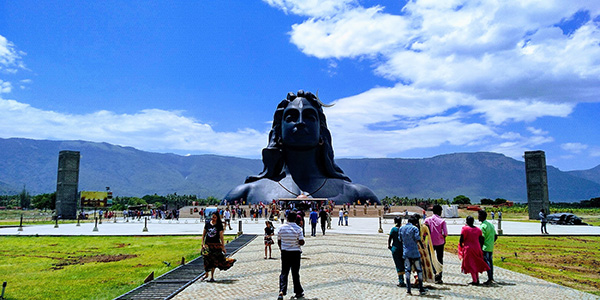
Housing
Rent in India can cost between $200 to $300 USD per month. The state of Goa has gained a reputation for being trendy among self-made expats, as a lot of artisans reside there.
Travel writer and blogger Anna Phipps, says “The longer I’m in Goa, the more people I meet and the harder it is to leave.”
And if you want to live outside a major city, rent is even cheaper. You can rent a decent apartment for as low as $60 USD per month.
Food
Do you love to eat? Well, India is a great place to stuff yourself on a dime, a full plate at a restaurant can cost around $1, which sounds wild. Probably because many fast-food restaurants in the US don’t even have dollar menus anymore! And when it comes to groceries, you can get the basics for around $20 per week. However, if you are a beef lover, Southern India may not be the place for you. It’s hard to find beef on many restaurant menus and in grocery stores due to partial beef bans in some eastern and southern Indian states and union territories:
Eight states and four union territories in eastern and southern India have laws that ban the slaughter of cows and calves, but allow bulls, bullocks and buffaloes to be killed as long as they have a “fit for slaughter” certificate.
(Source: BBC)
Transportation
There are a lot of ways to get around India. If you live in a major metro, transportation is quite affordable. For instance, a single bus ride in Delhi only costs around 20 cents, according to the city’s tourism site. Additionally, India has a robust railway system with relatively affordable ticket prices. India Today, an English-language news outlet in India, says a first-class train ticket from Delhi to Mumbai is around $63.21 USD.
Safety
While India is a more affordable than other countries, be careful when choosing where to live. Crime rates are high in many metros and even some rural areas. To determine the risk-level interactive map from Crime in India can show you what types of crimes happen where.
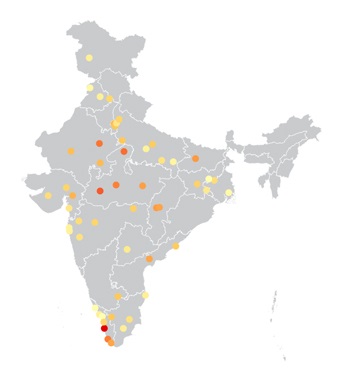
Vietnam
Vietnam’s bustling cities, beautiful countryside and low cost of living are sure to please anyone who decides to move there.
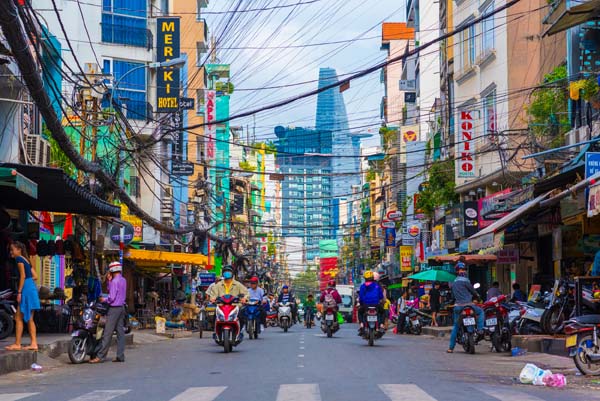
Housing
Whether you want to live in the heart of the city, hide in the mountains or plant yourself on the beach, modern housing in Vietnam is cheaper than a lot of other places. Rent can be as low as $200 USD per month. However, rent costs can depend on the location and size of the property you choose.
Food
Local dry markets, or markets that sell fruits, vegetables and grains, can be fantastic places to buy affordable groceries – and an unintentional meet and greet with your neighbors. But if you live in the city and crave some good old American fast food, Expatistan, a site that provides cost of living indexes, says your standard combo meal only costs around $3.79 USD.
Transportation
Motorbikes are both a popular and affordable mode of transportation in Vietnam and you can buy a nice one for around $750 USD. That may sound a bit more expensive, but when you compare the price of a motorbike to a brand-new car in many parts of the world, it’s a pretty good deal.
Safety
Not only is Vietnam cheap, it’s also relatively safe, according to the 2021 Global Peace Index, by the Institute for Economics & Peace. Violent crime rates aren’t as high. However, if you live in a major city like Hanoi, be aware of petty theft crimes like pickpocketing.
Thailand
With colorful Buddhist temples and dazzling street markets that fill the air with the scent of local Thai cuisine, Thailand is a booming yet economical country for digital nomads and other expats wanting to live in Southeast Asia.

Housing
Rent in a major city like Bangkok starts at $462 USD per month, according to bangkokcondofinder.com, a site used to find apartments and condos in Bangkok.
Chiang Mai, another bustling Thai metro, is also relatively affordable. Living expenses for individuals in Chiang Mai are only around $534 USD per month and $1,892 USD per month for a family of 4, per data from NUMBEO, another site that provides cost of living indexes.
Food
Like India, the food in Thailand is delicious, cheap and plentiful. It’s like you could eat out every night without going broke – a dream for us all, isn’t it? A plate of street food should only cost you between $1 USD and $3 USD, according to Tripsavvy , a website that provides price information for travelers and expats. And if you get sick of street food, basic groceries like milk, eggs, fruits vegetables and other produce usually only cost around $28 USD per week.
Transportation
Most of Thailand’s cities are small enough to travel on foot, but many locals opt for a scooter. You can rent scooters for around $6.30 USD per day, according to Travel Thailand Essentials, a website written by an expat who provides information on living and traveling in Thailand.
Safety
Thailand, like anywhere, has its safe areas and not-so-safe areas. Petty theft can be common in some areas, but as long as you remain aware and vigilant of your surroundings, you should be okay. The US State Department also says certain areas of Thailand, like the Yala, Pattani, Narathiwat and Songkhla provinces should be temporarily avoided due to civil unrest.
Malaysia
Malaysia is one of Asia’s most friendly and tolerant countries. You can expect top-notch hospitality from locals here, as they are very welcoming to the mass influx of expats moving here. Not only is Malaysia welcoming, but they’ve also made it very easy to live there. The country allows new travelers to obtain 10-year visas under its Malaysia My Second Home (MM2H) program.

Housing
Rent prices can vary depending on where you live. But on average, rent is relatively affordable in many parts of Malaysia. Kristen Raccucia, a writer who lives in the city of Penang, said.
“I love everything about [Penang]. The food is great, the people are welcoming, there’s a big expat community, the price is right, everything.”
She and her husband live in a 2,300 sq. ft. apartment for only $650 USD per month.
Food
Love noodle and rice dishes? Do you love getting them for cheap? Well then Malaysia is the right place for you! You can get both at a street market for around $1 USD and many other local dishes are under $2 USD. Groceries in Malaysia are as much, if not more affordable than eating out. Which, to many, the concept is mind-boggling. Common grocery items like milk, bread, produce, chicken, beef and pork can cost between $10 USD and $22 USD per week here.
Transportation
Malaysia is also known for its vast and affordable public transit. For example, in a big capital city like Kuala Lumpur, a single bus ride would only cost you 70 cents, according to the city’s website.
Safety
Malaysia is typically a safe place to live with low to minimal threats of violence. But due to COVID-19, the US State Department has issued travel warnings, as Malaysia’s government still has strict lockdown rules in place.
Cheapest Countries to Live in Europe
Some countries in Europe are known for their high cost of living. Yet, others are more economical and still have robust social safety nets and rich cultural traditions.
Portugal
Portugal is one of Western Europe’s most affordable countries, according to Forbes. And that says a lot compared to the cost of others in the region.
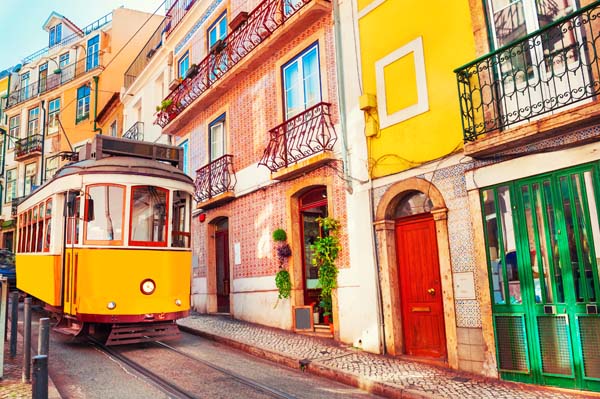
Housing
One reason living in Portugal is because there are flexible living options. You can rent a shared apartment with prices starting at $400 USD per month, according to International Living Magazine. Private apartments can cost a little more and prices can fluctuate depending on where you live. If you’re living in Lisbon, Portugal’s capital city, it’s a bit more expensive. There are also some long-term housing options like hostels. Hostels can be much more affordable than renting an apartment or home, just prepare to get really cozy with your neighbors!
Food
Portugal is known for its rich culinary heritage with fish, meat and garlic as some of its cuisine staples. Dinner is THE premier social activity here. So, if you decide to eat out, restaurant prices can range from $5 USD to $45 USD, depending on where you live and where you go. And, of course, eating dinner at home in Portugal is often a more economical option. Groceries are affordable for meals at home, even in the big, bustling cities. Average grocery costs in Portugal can run around $200 USD per month. Those costs can seem steep, but hey, it’s ALOT better than other places.
Transportation
Transportation in Portugal is also relatively affordable. Expatica says the country has a very dense and accessible public transportation network that spans across the entire country s. In Lisbon, for example, bus and tram tickets can cost between $1 USD to $2 USD per ride. And if you’re trying to get to more rural areas, beportugal.com, a website that helps people navigate life in Portugal, rideshare platforms like Uber and Cabify can provide a reasonably priced alternate transportation option.
Safety
Portugal is listed among the top five safest places on the Global Peace Index. At the same time, Lisbon is a popular spot for pickpockets. If you plan to live in Lisbon, just remain mindful of your surroundings.
Cheapest Countries to Live in Central America
For ocean lovers, Mayan history buffs and hikers alike, Central America is a great place for expats looking to get out of their comfort zones and out of expensive cities.
Costa Rica
Costa Rica is a tropical paradise that doesn’t include an expensive price tag. International Living says you can make $1,600 to $2,000 per month and live a fairly luxurious lifestyle. Plus, it is one of the best countries for expats and many locals welcome them with open arms.
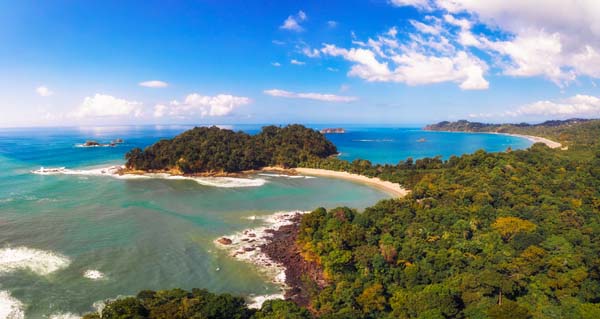
Housing
A one-bedroom apartment in Costa Rica typically costs around $500 USD. However, if you’re living in the capital of San Jose or another coastal town, expect to pay a little more. NUMBEO says rent for a 1-bedroom apartment in San Jose’s city center can cost around $631 USD per month and a 3-bedrroom apartment will cost you around $980 USD per month.
Food
Restaurant dining can be a bit more expensive, especially in San Jose and coastal resort towns. But when you can get such scenic views with your meal, it can be so worth it. Plus, it’s still less pricey than places like Paris or New York City. If you get a meal for two at a restaurant, it can cost around $40 USD. At the same time, that $40 USD buys you a three-course meal for two people, so you definitely won’t need dessert after that. Fortunately, groceries are a little cheaper. If you live in Costa Rica, basic grocery items only cost around $24.95 per USD per week.
Transportation
The US News and World Report says:
The best way to get around Costa Rica is by bus, which is reliable, navigable, inexpensive and frequently runs through San José, Costa Rica’s capital.
Local public transit buses are fairly cheap. In San Jose, riding the city bus costs around 35 cents per ride. If you are looking to go cross-country, there are public buses that offer rides out of San Jose to coastal cities like Jaco or Tamarindo. These typically cost around $40 USD to $80 USD per ride.
Safety
Costa Rica has also been labeled as one of the most peaceful countries in Central America by the Global Peace Index. However, it has seen an uptick in crime in recent years, per data from the US State Department. But if you exercise caution and remain aware of your surroundings, you should be okay.
Cheapest Countries to Live in South America
As one of the most biodiverse continents on Earth, there’s a climate and a culture everyone can enjoy in South America. And while some areas are dealing with political unrest and skyrocketing inflation, others are some of the most beautiful, cheap and safe places to live in the world.
Bolivia
As one of the cheapest countries in South America, Bolivia is an excellent place for living and working abroad. With plenty of drinking, dancing, and some of the happiest people you’ll ever meet, you are sure to feel welcome here.
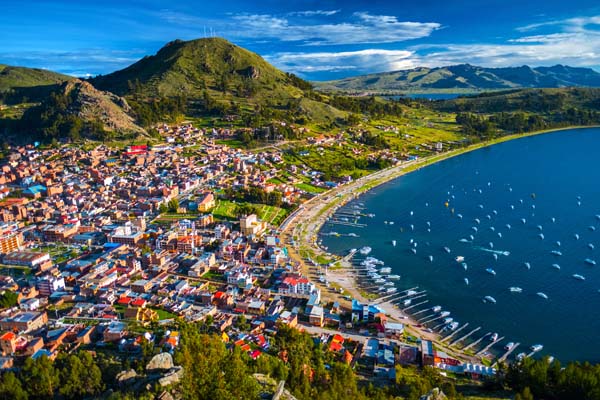
Housing
It’s fairly easy to find decent living spaces here. Lonely Planet, an informational site for travelers and expats, says you can rent a place in Bolivia for around $300 USD to $500 USD per month. In some cases, apartments or other rental units may come completely furnished and include Wi-Fi, which can give you a significant discount on your moving costs.
Food
You can feast like royalty without breaking the bank in Bolivia. Culture Trip, a cultural dining site, says you can order a three-course meal at some high-end restaurants. For groceries in Bolivia, essential items like milk, eggs, produce, cheese, chicken and bread average around $15 USD to $25 USD per week. You can even get a quality bottle of wine for only $7 USD, making it easier to host a fancy party on a dime.
Transportation
Public transportation is widely used in Bolivia. Micros (city buses) and Trufis are used by both locals and tourists. There are also Flotas, which are buses used for more long-distance trips. According to Lonely Planet, Micro buses are very affordable, costing around 20 cents per ride. Trufis are about 33 cents per ride. For Flotas’, prices can vary depending on the type of bus you ride, as some are known to be more luxurious than others.
Safety
In terms of safety, Bolivia has one of the lowest crime rates in South America. According to Internations, a site that provides country information for expats, many Bolivian cities have medium level crime rates, meaning they’re mostly safe, but that people should keep an eye on their surroundings. If you are in Santa Cruz, however, locals say it’s best to exercise caution, as the city has a reputation for high crime rates.
A High Quality of Life Without the High Costs
Regardless of your reason for moving, any of these countries can be an exciting and economical new place to call home. And while most expats experience culture shock as they adjust to their new country, many find that this experience allows them to grow and gives them a whole new perspective on life.
No matter where you go, there can be a lot of learning and adapting to do. But don’t worry, the WorldSmart Association can be your ultimate guide to enduring the ups and downs of expat life. Become a member today!







